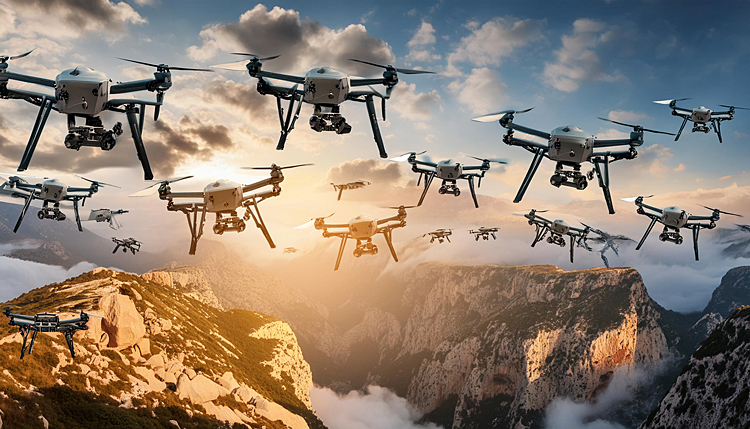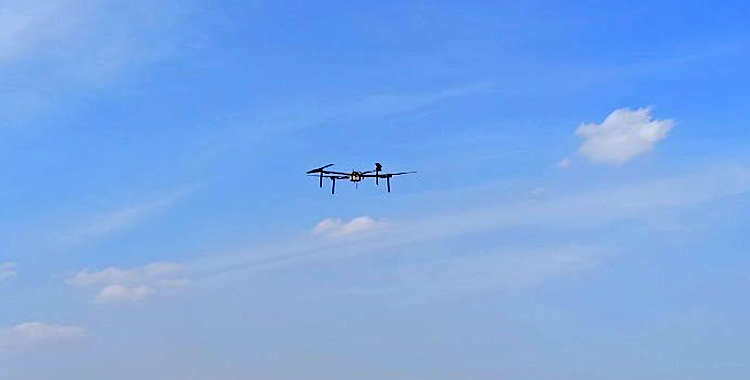INDIAN ARMED FORCES CHIEFS ON OUR RELENTLESS AND FOCUSED PUBLISHING EFFORTS

The insightful articles, inspiring narrations and analytical perspectives presented by the Editorial Team, establish an alluring connect with the reader. My compliments and best wishes to SP Guide Publications.

"Over the past 60 years, the growth of SP Guide Publications has mirrored the rising stature of Indian Navy. Its well-researched and informative magazines on Defence and Aerospace sector have served to shape an educated opinion of our military personnel, policy makers and the public alike. I wish SP's Publication team continued success, fair winds and following seas in all future endeavour!"

Since, its inception in 1964, SP Guide Publications has consistently demonstrated commitment to high-quality journalism in the aerospace and defence sectors, earning a well-deserved reputation as Asia's largest media house in this domain. I wish SP Guide Publications continued success in its pursuit of excellence.
Drone Wall
The goal of the drone wall is to use drones and other technologies to protect borders against provocations from unfriendly countries and to prevent smuggling.
 |
The Author is Former Director General of Information Systems and A Special Forces Veteran, Indian Army |

Terrorists have been using drones over the past several years. The Islamic State used armed drones in Iraq and Syria. The Houthi used them to attack the ARAMCO oil facilities in Saudi Arabia and are now targeting Israel bound vessels in the Red Sea. Drones were uses extensively in the Azerbaijan-Armenia wars but the war in Ukraine has broken all records, in that Ukraine is reportedly losing some 10,000 drones every month and NATO is gearing up to supply two crore drones to Ukraine in one year. Israel is using drones in Gaza and both Israel and Hezbollah are using drones to target each other. Incidentally, Houthi have already shot down six American MQ-9 Reaper Drones. India is procuring 31 MQ-9B SkyGuardian drones from the US.
But while drone swarms have been in action for the past several years, the concept of "drone wall" deployed collusively by multiple countries is a new one. Otherwise, Israel has deployed advanced surveillance systems, including drones, along its borders to monitor and prevent incursions. Similarly, the US has employed drones for surveillance along its southern border to combat illegal immigration and smuggling.
The 'drone wall' will be constructed using a combination of unmanned aerial vehicles (UAVs) and advanced surveillance technologies, with drones equipped with various sensors and cameras to monitor border activities continuously.
According to news reports, NATO allies are to deploy a drone wall on the border with Russia. Six NATO countries (namely Lithuania, Latvia, Estonia, Poland, Finland, and Norway) have announced plans to construct a drone wall along their borders with Russia aimed at enhancing border security and deterring potential provocations from Russia. The proposal for the drone wall comes amid heightened tensions and security concerns due to Russia's actions in Ukraine and its broader geopolitical stance.
The 'drone wall' will be constructed using a combination of unmanned aerial vehicles (UAVs) and advanced surveillance technologies. The six countries will deploy these drones along their respective borders with Russia. The drones will be equipped with various sensors and cameras to monitor border activities continuously. Additionally, anti-drone systems will be installed to counter any hostile drones that may be used for smuggling or other provocations.
Agnė Bilotaitė, Interior Minister of Lithuania told media, "This is a completely new thing, a drone wall stretching from Norway to Poland, and the goal is to use drones and other technologies to protect our borders against provocations from unfriendly countries and to prevent smuggling." These six countries have expressed their commitment to investing in the necessary technologies and systems to ensure the successful implementation of the drone wall.
Six NATO countries (Lithuania, Latvia, Estonia, Poland, Finland, and Norway) have announced plans to construct a "drone wall" along their borders with Russia, aimed at enhancing border security and deterring potential provocations.
The efficacy of the drone wall, however, will depend on multiple factors, like: all weather surveillance capability taking into account the diverse terrains and weather conditions along the extensive borders; no gap coverage and 24x7 efficiency; technological sophistication to detect and neutralise threats; anti-drone defences and ability to take on swarm attacks; reserves to keep the drone wall intact in the event of casualties; seamless integration and coordination between the drones operated by different countries and their border security systems; adequacy of funding for procurement, deployment, and recurring maintenance of the drone wall.

The above NATO drone wall would be more for surveillance and detecting smugglers, infiltrates and preventing illegal activities, Moscow has warned NATO countries against supplying weaponry to Ukraine for attacking deep inside Russia, failing which Russia could target these countries. How will the drone wall function against Russian interference/attack remains to be seen? However, it is significant to note that despite Israel having deployed advanced surveillance systems, including drones, along its borders to monitor and prevent incursions, the Israel Defense Forces (IDF) was taken completely by surprise when Hamas attacked Israel on October 7, 2023.
The efficacy of the drone wall will depend on factors like all-weather surveillance capability, technological sophistication to detect and neutralise threats, anti-drone defenses, and seamless integration between drones operated by different countries and their border security systems.
NATO's drone wall presents a modern solution to border security but its real-world effectiveness will only be proven once operational. Initial trials and phased implementations will likely provide insights into necessary adjustments and improvements. India has been using drones for border surveillance but it would be good for India to study the setting up of the NATO drone wall. Looking at the porosity and threats along our borders, it would be good to plan for phased employment of segmented drone walls in sensitive portions.
On the home front, the encouraging news is that Google, through its parent company Alphabet, is considering setting up its drone manufacturing operations in Tamil Nadu, India, as part of its expansion plans into the Indian market. Alphabet's subsidiary, Wing LLC, which specialises in drone delivery services, will be spearheading the manufacturing operations. Google plans to make drones in India and export these to countries like the US and Australia.
While Wing LLC has already established itself as a key player in the drone delivery space, offering its services to businesses across the US, Europe, and Australia, Google is in talks with the Tamil Nadu Government for setting up the venture. Google's strategy is to diversify its manufacturing footprints and leverage India's skilled workforce and conducive environment for business. In addition to drone manufacturing, Google is also planning to produce Pixel smartphones locally in India. Reports suggest that the company is in advanced talks with Foxconn and Dixon to assemble Pixel phones in Tamil Nadu.
Google, through its parent company Alphabet, is considering setting up its drone manufacturing operations in Tamil Nadu, India, as part of its expansion plans into the Indian market, with the aim to produce and export drones to countries like the US and Australia.
India's drone market is set to see exponential growth. Projections indicate that India will be a $13 billion market by 2030. Recently there was news that Israel wanted India to supply 10,000 drones. A successive news report stated that India has sent 27 tonnes of armament to Israel, albeit without disclosing details of what was supplied.
Concurrently, there is news that Hyderabad-based Zebu Intelligence Systems has set a new record in aviation history by setting up a Guinness World Record for the longest electric-powered flight by drone under 5-kg. The flight of the drone lasting three hours, 13 minutes and 14 seconds (powered by indigenously developed propulsion system) was piloted by Jogarao Bommana on May 6, 2024. The previous flight record of a drone in this category was only 50 seconds. Electric drones offer significant advantages over traditional fuel-powered drones. These include comparatively quieter operation, lower emissions and increased efficiency. Electric drones have many potential applications, including surveillance, logistics and disaster relief.





